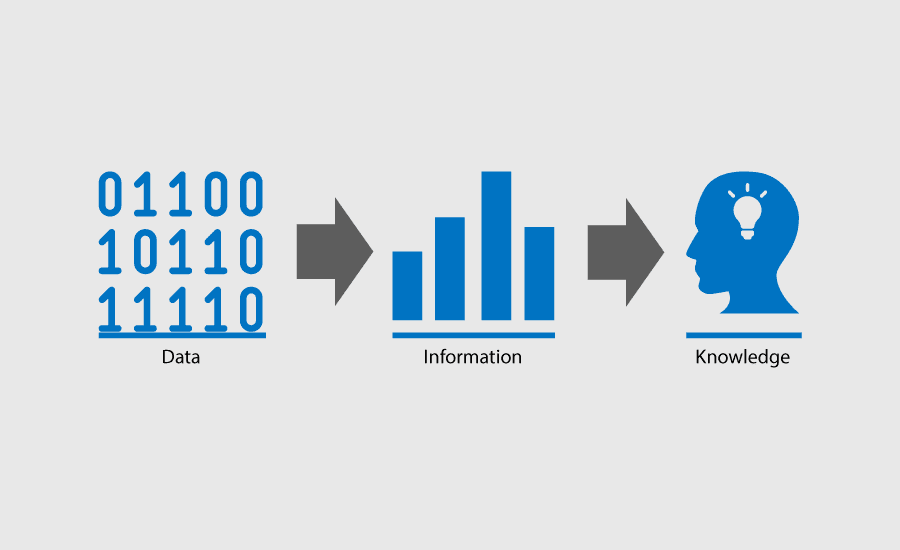Data Analytics: The Four Approaches to Analyzing Data and How To Use Them Effectively
You will learn about descriptive analytics, data warehousing, machine learning, and big data.

Photo by Leeloo Thefirst
Have you ever wished you had a crystal ball that could tell you the future of your business? While we can’t promise you a mystical glimpse into what’s to come, we do have the next best thing: data analytics.
In today’s data-driven world, it has become effortless for businesses to collect and generate vast amounts of data. However, just having data is not enough.
As a business, you need to be able to make sense of the data and use it in a way that will allow you to make better decisions. This is where data analytics comes in. Data analytics refers to the process of examining data to extract insights and make informed decisions.
According to statistics, the data analytics market is growing rapidly and is expected to hit over 650 billion dollars by 2029. This shows the increasing significance of data analytics in businesses and the global economy.
The future is data-driven. From predicting customer behavior to identifying areas for optimization, data analytics can help businesses unlock the secrets hidden in their data and drive better outcomes. But with so many tools and techniques available, it can be overwhelming to know where to start.
This article will take you through data analytics and explore the four approaches to analyzing data. By the end of reading this, you’ll have the knowledge you need to harness the power of data and make informed decisions that can take your business to new heights.

Image from HBS
Descriptive Analytics
Descriptive analytics is a type of data analysis that focuses on describing and summarizing data to gain insights into what has happened in the past. It is commonly used to answer questions such as “What happened?” and “How many?”.
Descriptive analytics can help businesses and organizations understand their data and identify patterns and trends that can inform decision-making.
Here are some real-life examples of descriptive analytics:
- A retail store might analyze historical sales data to identify popular products and trends. For example, people tend to buy more candy in February.
- Patient data can be summarized to identify common health issues. For example, most people get the flu from October to June.
- Student performance data can be analyzed to identify areas for improvement. For example, most students who fail Calculus are frequently late to class.
To use descriptive analytics effectively, you need to ensure that your data is accurate and of high quality. It’s also crucial to use clear and concise visualizations to communicate insights effectively.
Predictive Analytics
Predictive analytics uses statistical and machine learning techniques to analyze historical data and predict future events. It is commonly used to answer questions such as “What is likely to happen?” and “What if?”.
Predictive analytics is useful as it can help you plan ahead. It can help improve business operations, reduce costs, and increase revenue. For example, you can predict how sales will likely behave based on seasonality and previous sales figures. If your predictive analysis tells you that sales will likely decrease in winter, you can use this information to design an effective marketing campaign for this season.
Here are some practical examples of predictive analytics in action:
- A bank might use predictive analytics to assess credit risk and determine whether to grant a loan to a customer. In open banking, predictive analytics can help build highly personalized behavioral models specific to each customer and identify their creditworthiness in new ways. For customers, this may mean better and cheaper access to bank accounts, credit cards, and mortgages.
- In marketing, predictive analytics can help identify which customers are most likely to respond to a particular offer.
- In healthcare, predictive analytics can be used to identify patients at risk of developing a particular disease.
- In manufacturing, predictive analytics can be used to forecast demand and optimize supply chain management.
However, there are also some challenges to using predictive analytics effectively. One challenge is the availability of high-quality data essential for accurate predictions. Another challenge is selecting appropriate modeling techniques to analyze the data and make accurate predictions. Finally, communicating predictive analytics results to decision-makers can be challenging, as the techniques used can be complex and difficult to understand.
Prescriptive Analytics
Prescriptive analytics is a type of data analysis that goes beyond descriptive and predictive analytics to provide recommendations for actions you should take. In other words, this approach involves using optimization techniques to identify the best course of action, given a set of constraints and objectives.
It is commonly used to answer questions such as “What should we do?” and “How can we improve?”
To be effective, it requires a deep understanding of the data being analyzed and the ability to model and simulate different scenarios to identify the best course of action. As such, this is the most complex approach of the four methods.
Prescriptive analytics can help you solve various problems, including product mix, workforce planning, marketing mix, capital budgeting, and capacity management.

Photo by Pixabay
The best example of prescriptive analytics in action is using Google maps for directions during peak hours. The software considers all modes of transport and traffic conditions to calculate the best route possible. A transportation company might use prescriptive analytics in this way to optimize delivery routes and minimize fuel costs. This is important especially when you consider the rising cost of fuel. In Canada, for example, the average person spends approximately $2,000 annually per vehicle on fuel alone, while in the United States households are spending almost 2.24% of their total annual income on fuel.
However, like with predictive analytics, there are some challenges to using prescriptive analytics effectively. The first challenge is the availability of high-quality data essential for accurate analysis and optimization. Another challenge is the complexity of the optimization algorithms used, which can require specialized skills and knowledge to implement effectively.
Diagnostic Analysis
Diagnostic analytics is a type of data analysis that goes beyond descriptive analytics to identify the root cause of an issue or problem. It answers questions such as “Why did it happen?” and “What caused it?”. For example, you can use diagnostic analysis to determine why your January sales dropped by 50%.
Diagnostic analytics involves exploring and analyzing data to identify relationships and correlations that can help explain an issue or problem. This can be done using techniques such as regression analysis, hypothesis testing, and causal analysis.
Real-life examples include:
- You can use diagnostic analysis to identify the root cause of a quality issue in your production process.
- You can also use it to identify the cause behind a customer’s complaint and provide a targeted solution.
- In case of a cyber threat, you can also use it to identify the source of a security breach and prevent future attacks.
There are many benefits to using diagnostic analytics, such as identifying the underlying causes of issues and problems and developing targeted solutions. But, like with the previous two data analytics methods, there are some challenges to consider. For one, acquiring high-quality data and ensuring accurate analysis and insights can be difficult. Secondly, the analysis techniques can be quite complex and may require specialized skills and knowledge to be implemented effectively.
| Approach | Definition | Answers the questions |
| Descriptive | Describes and summarizes data to gain insights into what has happened in the past. |
|
| Diagnostic | Identifies the root cause of an issue or problem |
|
| Predictive | Analyzes historical data and makes predictions about future events. |
|
| Prescriptive | Provides recommendations for actions you should take based on the analysis. |
|
How To Use the Four Approaches Effectively
While each of the four approaches to analyzing data has its own strengths and weaknesses, choosing the most appropriate approach for a given problem can be critical for achieving the desired results. Some factors to consider when choosing an approach may include the following:
The nature of the problem being addressed. Different problems will require different approaches. For example, you can use:
- Descriptive analytics to summarize customer feedback data and identify customer demand patterns
- Diagnostic analytics to identify the factors that are driving changes in sales performance
- Predictive analytics to forecast future demand for a product
- Prescriptive analytics to optimize production schedules in a manufacturing facility
The type and quality of available data. It is also important to ensure that the data is accurate, complete, and relevant. This may involve cleaning, transforming, or otherwise preparing the data to ensure it is suitable for the chosen approach. In many cases, data preparation may be a time-consuming and iterative process and may require specialized tools or expertise.
The resources and skills available for analysis. To conduct effective data analytics, it is also important to have the right skills and tools at hand. This may include statistical analysis software, programming languages, and visualization tools. Some common skills that may be useful for data analysts include data wrangling, data visualization, machine learning, and statistical inference.
Conclusion
From the discussion above, it’s clear that data analytics is a powerful tool that can provide valuable insights and drive business growth. By understanding and utilizing the four different approaches to data analytics, businesses can better understand their data and make more informed decisions.
However, it is important to carefully consider your business’s specific needs and goals when choosing an analytics approach and to be aware of the advantages and limitations of each.
Ultimately, by choosing the right approach and implementing it effectively, businesses can gain a competitive advantage and achieve long-term success. So go forth and explore the exciting world of data analytics - the possibilities are endless!
Nate Rosidi is a data scientist and in product strategy. He's also an adjunct professor teaching analytics, and is the founder of StrataScratch, a platform helping data scientists prepare for their interviews with real interview questions from top companies. Connect with him on Twitter: StrataScratch or LinkedIn.
